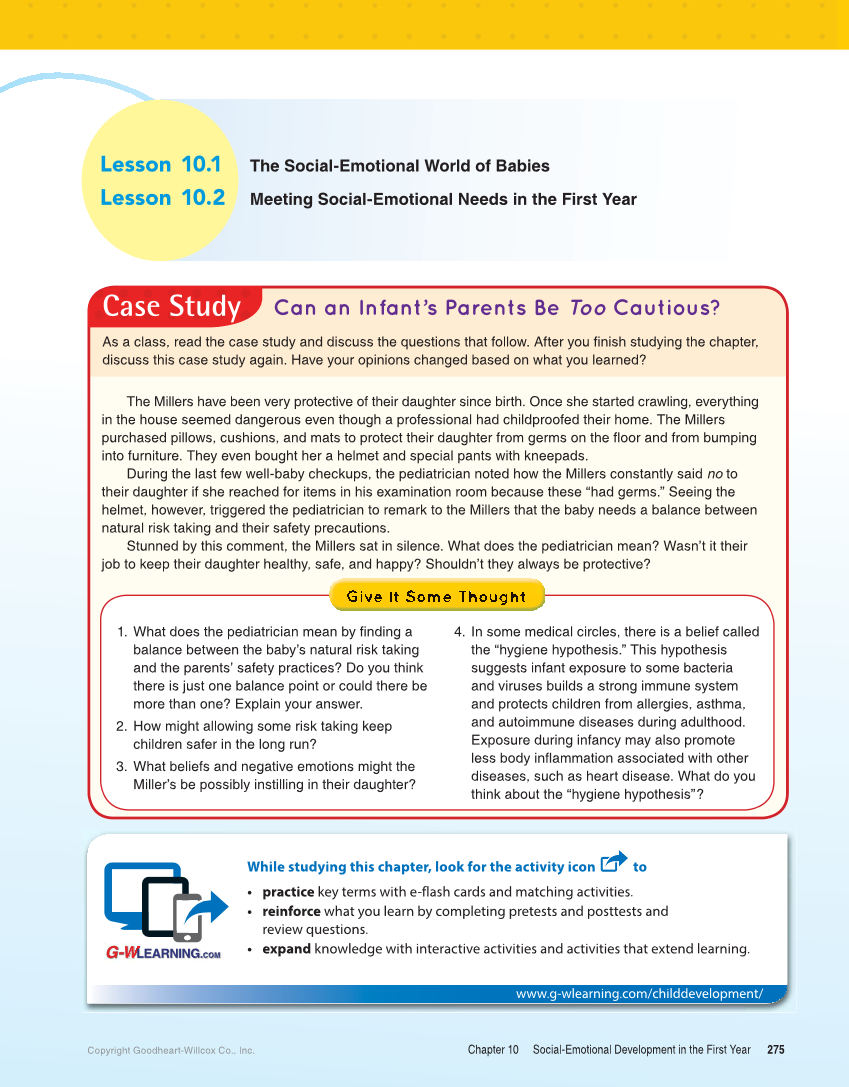Copyright Goodheart-Willcox Co., Inc. Chapter 10 Social-Emotional Development in the First Year 275 While studying this chapter, look for the activity icon to • practice key terms with e-flash cards and matching activities. • reinforce what you learn by completing pretests and posttests and review questions. • expand knowledge with interactive activities and activities that extend learning. www.g-wlearning.com/childdevelopment/ As a class, read the case study and discuss the questions that follow. After you fi nish studying the chapter, discuss this case study again. Have your opinions changed based on what you learned? The Millers have been very protective of their daughter since birth. Once she started crawling, everything in the house seemed dangerous even though a professional had childproofed their home. The Millers purchased pillows, cushions, and mats to protect their daughter from germs on the fl oor and from bumping into furniture. They even bought her a helmet and special pants with kneepads. During the last few well-baby checkups, the pediatrician noted how the Millers constantly said no to their daughter if she reached for items in his examination room because these “had germs.” Seeing the helmet, however, triggered the pediatrician to remark to the Millers that the baby needs a balance between natural risk taking and their safety precautions. Stunned by this comment, the Millers sat in silence. What does the pediatrician mean? Wasn’t it their job to keep their daughter healthy, safe, and happy? Shouldn’t they always be protective? Can an Infant’s Parents Be Too Cautious? Lesson 10.1 The Social-Emotional World of Babies Lesson 10.2 Meeting Social-Emotional Needs in the First Year 1. What does the pediatrician mean by fi nding a balance between the baby’s natural risk taking and the parents’ safety practices? Do you think there is just one balance point or could there be more than one? Explain your answer. 2. How might allowing some risk taking keep children safer in the long run? 3. What beliefs and negative emotions might the Miller’s be possibly instilling in their daughter? 4. In some medical circles, there is a belief called the “hygiene hypothesis.” This hypothesis suggests infant exposure to some bacteria and viruses builds a strong immune system and protects children from allergies, asthma, and autoimmune diseases during adulthood. Exposure during infancy may also promote less body infl ammation associated with other diseases, such as heart disease. What do you think about the “hygiene hypothesis”?
